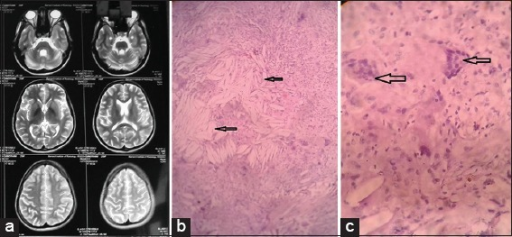Cerebrotendineous xanthomatosis
| Cerebrotendinous xanthomatosis | |
|---|---|
| Other names: Cerebrotendinous xanthomatosis | |
 | |
| Cerebrotendineous xanthomatosis has an autosomal recessive pattern of inheritance. | |
Cerebrotendinous xanthomatosis also called cerebral cholesterosis,[1] is an autosomal recessive form of xanthomatosis.[2][3] It falls within a group of genetic disorders called the leukodystrophies.
Signs and symptoms

An inherited disorder associated with the deposition of a steroid known as cholestanol in the brain and other tissues and with elevated levels of cholesterol in plasma but with normal total cholesterol level; it is characterized by:[citation needed]
- Progressive cerebellar ataxia (beginning after puberty)
- Juvenile cataracts
- Juvenile/infantile onset chronic diarrhea
- Childhood neurological deficit
- Tendineous or tuberous xanthomas.
Genetics
CTX is associated with mutations in the CYP27A1 gene, located on chromosome 2q33-qter.[1][4] The disorder is inherited in an autosomal recessive manner.[2] This means the defective gene responsible for the disorder is located on an autosome (chromosome 2 is an autosome), and two copies of the defective gene (one inherited from each parent) are required in order to be born with the disorder. The parents of an individual with an autosomal recessive disorder both carry one copy of the defective gene, but usually do not experience any signs or symptoms of the disorder.[citation needed]
Diagnosis
Elevated levels of serum cholestanol are diagnostic of CTX. Alternatively analysis of 27-hydroxycholesterol and 7 alpha hydroxycholesterol can be used. Genetic testing of the CYP27A1 gene is confirmatory and is increasingly being used as a first line test as part of symptom specific gene panels (genetic eye disease, ataxia, dementia).[citation needed]
Treatment
The standard treatment is chenodeoxycholic acid (CDCA) replacement therapy. Serum cholesterol levels are also followed. If hypercholesterolemia is not controlled with CDCA, an HMG-CoA reductase inhibitor ("statins" such as simvastatin) can also be used.[5]
Eponym
It was formerly known as "Van Bogaert–Scherer–Epstein syndrome".[6][7]
See also
References
- ↑ 1.0 1.1 Online Mendelian Inheritance in Man (OMIM): 213700
- ↑ 2.0 2.1 Pilo de la Fuente B, Ruiz I, Lopez de Munain A, Jimenez-Escrig A (May 2008). "Cerebrotendinous xanthomatosis: Neuropathological findings". J. Neurol. 255 (6): 839–42. doi:10.1007/s00415-008-0729-6. PMID 18458861. S2CID 31001655.
- ↑ James, William D.; Berger, Timothy G.; et al. (2006). Andrews' Diseases of the Skin: clinical Dermatology. Saunders Elsevier. p. 535. ISBN 978-0-7216-2921-6.
- ↑ Online Mendelian Inheritance in Man (OMIM): 606530
- ↑ Cerebrotendinous Xanthomatosis~treatment at eMedicine
- ↑ synd/1452 at Who Named It?
- ↑ L. van Bogaert, H. J. Scherer, E. Epstein. Une forme cérébrale de la cholestérinose généralisée (type particulier de lipidose à cholestérine). Paris, Masson, 1937.
External links
- GeneReviews/NCBI/NIH/UW entry on Cerebrotendinous Xanthomatosis Archived 2010-03-21 at the Wayback Machine
| Classification |
|---|
- Pages with script errors
- All articles with unsourced statements
- Articles with unsourced statements from September 2020
- Articles with invalid date parameter in template
- Webarchive template wayback links
- Lipid storage disorders
- Autosomal recessive disorders
- Skin conditions resulting from errors in metabolism
- Rare diseases